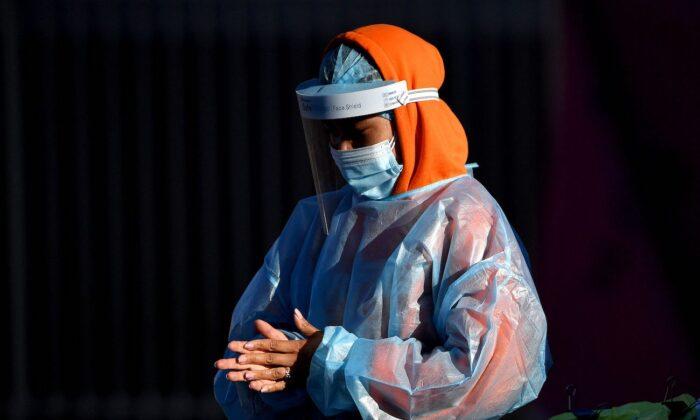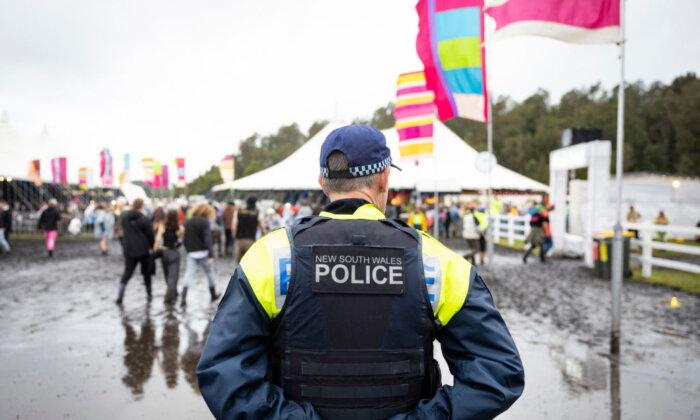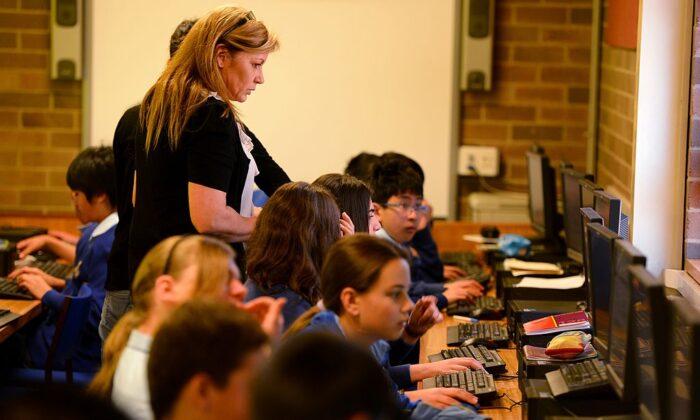Human metapneumovirus (HMPV) weekly case numbers surged in New South Wales (NSW) from 648 at the beginning of the month to 1,168 in the week ending Sept. 17, according to a NSW report (pdf).
Data in the NSW Respiratory Surveillance Report gathered from the NSW sentinel laboratory network found that positive tests could continue to increase.
Symptoms commonly associated with HMPV include cough, fever, nasal congestion, and shortness of breath. HMPV infection could progress to bronchitis or pneumonia, according to the Centres for Disease Control and Prevention (CDC).
Like most other respiratory illnesses, there is no vaccine for HMPV. COVID-19 was an “unusual” exception, with “tens of billions of dollars” invested into that vaccine.

A man wearing a face mask hails a taxi at Central Station in Sydney, Australia, on May 6, 2021. Mark Metcalfe/Getty Images
Authorities Warn About The Virus
University of Sydney Dr. Megan Steain said HMPV has been circulating in the human population for over 50 years, and it could be “deadly,” particularly for young children under one year and premature infants with lung issues.Dr. Steain said HMPV was the “leading cause” of respiratory infection hospitalisations for these children, and it could also lead to elderly hospitalisations.
HMPV cases are detected via molecular or polymerase chain reaction (PCR) testing, the same COVID-19 tests that aim to detect the causative virus, SARS-CoV-2.
Dr. Steain said Australia’s circulation of many respiratory illnesses was suppressed throughout the COVID-19 pandemic lockdowns; however, the current resurgence was likely due to this suppression resulting in lower population immunity.
“But now we’re also better at testing and looking for viruses,” she said, adding that could have led to the increase in case numbers.
HMPV is included in the regular respiratory panel doctors in Australia use to detect symptoms of respiratory illness, particularly in children.
NSW Chief Health Officer Dr Kerry Chant on Sept. 27 said, “We’ve now seen an uptick in flu, RSV, and HMPV is yet another virus.”
Dr. Chant said that given no HMPV treatment, the spike reminds residents to bring back crucial infection prevention measures from the pandemic.
“Stay away from workplaces and crowded places when you’ve got any viral infections, and stay home if you can,” she said.

NSW Chief Health Officer Dr. Kerry Chant speaks at a press conference in Sydney, Australia on May 20, 2022. Brook Mitchell/Getty Images
Spike Not Alarming, Doctor Says
However, former deputy chief medical officer Dr. Nick Coatsworth told 2GB radio the state’s spike in the non-COVID-19 respiratory virus was somewhat typical during a change of season. He added on average, the virus was detected eight times a year per child before the pandemic.Dr. Coatsworth said the common respiratory virus was “important” for humans’ immune system development; however, he warned severe asthmatics, people undergoing cancer chemotherapy, and those who are immuno-depressed could react poorly to it.
“You must do them a favour and keep away from them whilst you have the acute symptoms during the first couple of days, but sometimes these coughs can linger for a very long time, and you’re not transmitting the virus even if the cough’s around for a couple of weeks,” he said.
Further, clinical severity, measured through the proportion of patients admitted directly to ICU and deaths associated with influenza, is low, according to the Department of Health and Aged Care Australian Influenza Surveillance Report from Sept. 4 to 17.
Of the 235,018 laboratory-confirmed influenza notifications this year, only 249 influenza-associated deaths have been reported to the National Notifiable Diseases Surveillance System (NNDSS).
Further, there have been 3,224 hospital admissions, of which 232 (7 percent) were admitted directly to ICU.
About 72 percent of influenza-associated deaths were due to influenza A, and the median age of influenza-associated deaths was 76 years.

A healthcare worker prepares a dose Pfizer/BioNTEch COVID-19 vaccine at The Michener Institute, in Toronto, Canada, on Dec.14, 2020. Carlos Osorio/POOL/AFP via Getty Images
NSW Not Alone Compared to Other States and Countries
However, Australia is not the only country in the world experiencing an HMPV spike, with the United States experiencing a similar surge of the virus during their Spring season in March.Meanwhile, infectious diseases Physician and Microbiologist Dr. Paul Griffin said a similar HMPV spike is happening in Queensland.
Dr. Griffin said this would not be the “next global pandemic” but urged people to do their part to slow the spread.
“It’s interesting, a lot of other respiratory viruses on the decline, but HMPV does appear to be still increasing,” he said.
“We’re not suggesting that this is going to be something that’s going to be pervasive, and everybody’s going to get unwell,” he added. “But we’re seeing people hospitalised recently in my hospital.”
“That’s why it is important to not just focus on COVID, flu and even RSV, but to get those basics across the spectrum to protect yourself from respiratory illness.”
He suggested people wash their hands, wear a mask if sick, and stay at home and isolate where possible.







